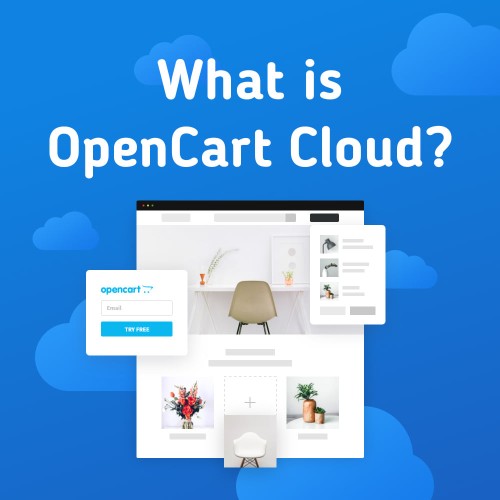The Future of E-Commerce: Integrating Virtual and Augmented Reality into Your Online Store
The E-commerce industry is evolving very quickly. Businesses are mindful of learning new strategies and trends to engage more consumers. Plus, they are seeking visionary approaches to improve shopping experiences. There are multiple e-commerce platforms like Opencart to provide a marketplace to create, scale, and run your business smoothly.
Similarly, Augmented and Virtual reality have opened the door to new opportunities. These two transformative technologies are reshaping online store experiences. From fascinating visual storefronts to product visualization, augmented and virtual reality offers new possibilities.
This article will discuss augmented and virtual reality and how it benefits in reshaping the e-commerce industry.
What is Augmented Reality?
Alexis L.irwin, founder of Influencerrate, said, "People are often curious about how augmented reality works. Augmented reality AR offers a blend of actual surroundings with computer-generated input. Its application differs from industry to industry. Besides this, its application may vary in graphics, videos, sounds, GPS overlays, and much more to enhance user engagement. Hence improving user experience along with user engagement.
Augmented reality allows you to visualize the product in your physical world quickly. These AR applications quickly catch and respond to modifications in the surrounding area. Although AR has been in the market for decades, its integration into e-commerce has offered new possibilities."
What is Virtual Reality?
Hammad Zubair, CEO of Tier75, said, "Virtual reality is a 3D projection designed to make you sense and feel products in your real world. You can usually enter the virtual world wearing a VR headset. It allows you to see and hear, giving an impression that you exist there. Moreover, you can also wear gloves with sensors to feel the touch in the virtual world. VR offers immersive experiences, allowing you to explore a space from the comfort of your home. Similarly, VR will let you know more about the product or experience trials before purchasing."
Thus, implementing the VR store online demands certain conditions for performing operations. For a better VR shopping experience, you can hire professional developers to turn it into a reality. It is essential to consider the relevant experiences for the booming growth of the future of online shopping.
Role of Augmented Reality and Virtual Reality
AR and VR refer to Augmented Reality and Virtual Reality, respectively. It is improving how you virtually sense an object or an environment. While AR and VR are different, the working direction is still the same. Augmented reality assists you in experiencing a product visualization on your phone in your surroundings. On the contrary, VR is more digital. It usually requires a headset (gloves occasionally) to let you into a virtual world. With VR, your surroundings transform completely, and you see yourself in a new space.
Awareness
Circulating products in the market is essential for businesses. Besides this, selling products and engaging new consumers is also necessary. It could be through creative marketing techniques or advertisements. Thus, many big names in e-commerce industries are integrating virtual reality into their strategies. Not only using VR for their growth but also spreading awareness to prosper the entire industry. With VR and AR, businesses can:
Build creative marketing campaigns to grab customer engagement and influence their views and behavior.
Build awareness of brand features. Plus, it allows customers to virtually experience the benefits of those features for themselves.
Convenient and Time-saving
E-commerce has also provided convenience to its customers. However, the influence of VR and AR is offering notable comfort to this industry. It not only brings comfort to retailers but also to consumers. Besides this, it significantly reduces the cost and time consumed in exploring new products. Traditionally, people would physically visit stores, search for products, test and make payments. However, AR and VR are transforming the dynamics, offering retailers to:
Develop virtual showrooms and let customers check out products from the comfort of their homes. They do not need to visit a physical retail store.
Offer virtual landscapes of projects. Plus, it facilitates consumers to experience all the attributes and proficiency first-hand.
Cost efficient
AR/VR ensures that the product you purchase suits your requirements, assisting in cutting costs. The most challenging decision while buying online is whether the product will suit you. Besides this, the complicated return process exhausts customers to leave the product with no use. Thus, AR/VR helps consumers find the right pair of shoes, sunglasses, and other products to meet their expectations.
Personalized Shopping Experience
Chef Olu, professional chef at chefol, said, "VR/AR can also help offer consumers a more personalized shopping experience. Based on collected data, businesses could build personalized virtual atmospheres unique to each customer. The optimistic impression and sense of fulfillment may enhance customer satisfaction and loyalty.
Furthermore, corporations can use VR/AR to give shoppers a more interactive shopping experience. They can let them virtually try on apparel or check out products before paying."
Potential Influence of Augmented and Virtual Reality on Businesses
Kenneth Jimmy, Product Engineer at Tekpip, said, "The potential influence of Augmented and Virtual reality on businesses can be enormous. Despite offering a more interactive and engaging shopping experience, it can improve customer service. For instance, VR lets customers interact with service providers to discuss store policies. It can offer a perfect personalized experience for online shopping. Besides this, stores can use VR/AR for product demonstration. It will allow customers to have a closer look at products before buying.
VR/AR can also be utilized to enhance employee training and growth. By developing virtual simulations, businesses can create a secure and influential way to practice and buff their skills. It can benefit to decrease the expense of training and boost the efficiency of the learning procedure. Similarly, VR/AR can be employed to develop virtual workspaces. It permits employees to cooperate and operate together in a virtual environment."
But with all these perks, several concerns need to be overcome.
Challenges for Augmented Reality and Virtual Reality Integration
Suspicion and prejudice of consumers before knowing something unusual. Until a few years ago, VR technology was not used and available to many people. But presently, each of us has access to VR technology. It has become normal in society.
The trouble of incompatibility of gadgets. Due to insufficient potency of devices and software, difficulties with the correct function of the technology may occur.
The unappealing impression of the task performance. The end product may look imperfect if a firm is not lucky enough to employ decent employees.
Familiarity with modern technologies cannot happen with low cost and short time. These transformations will take some time or even a year. But big corporations ready to take risks and spend capital will gain a competitive edge over the rest."
How to Develop AR/VR Applications
Development of AR and VR software requires multi-step procedures. It also involves mindful strategies, competent professionals, and dedication to offering an engaging and smooth user experience.
Here is a list of the things to consider for developing AR/VR applications:
Conceptualization: Define your VR/AR application's objective and features. Recognize the targeted pain points it deals with for consumers.
Content Creation: Create high-quality animation, 3D models, and engaging aspects to improve the user experience.
Software Development: Work with a qualified software development agency like Webisoft. Find experienced developers in AR/VR technologies to produce flawless and user-friendly applications.
Testing: Strict testing ensures that the application operates as expected. Test with different devices and strategies.
Deployment: Launch the application on competent e-commerce platforms like Shopify and Opencart. You can also launch in app stores and websites. Plus, be mindful of continuous updates based on user feedback.
Conclusion
The influence of AR and VR in e-commerce is vast, and it is predicted to evolve the industry more. It can offer higher conversion rates. Plus, it provides enhanced customer satisfaction and an incredible brand reputation. While there are still some concerns, implementing these technologies is becoming more convenient and less expensive.
Despite the size of businesses, it is readily available. As the technology continues to develop, AR and VR application opportunities in e-commerce are immense. Companies that can integrate these technologies early on will be well-designed to flourish in the future.



Login and write down your comment.
Login my OpenCart Account